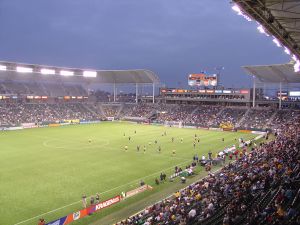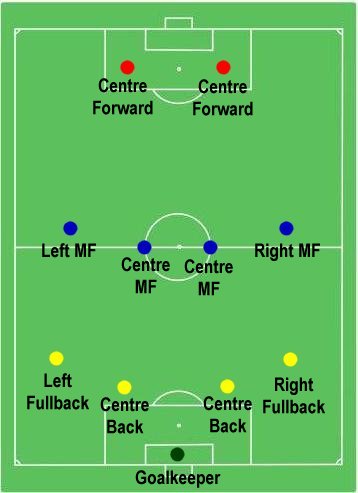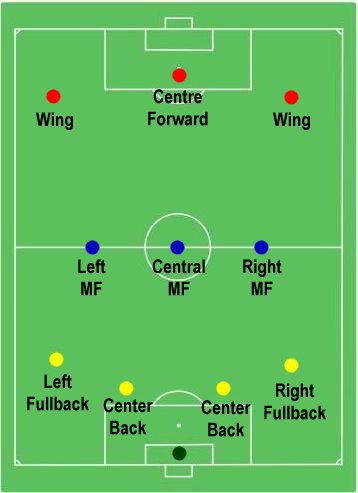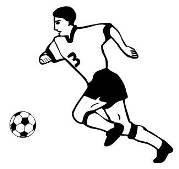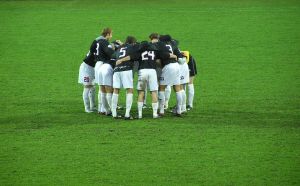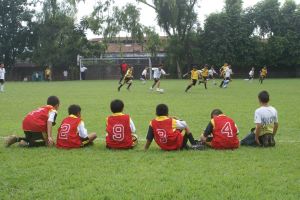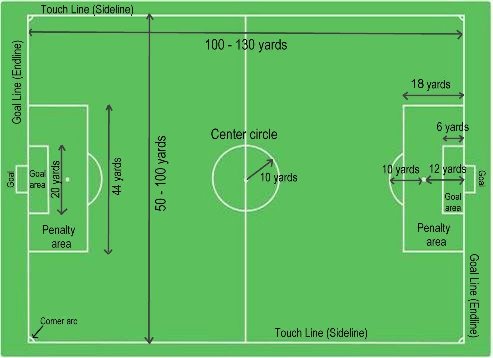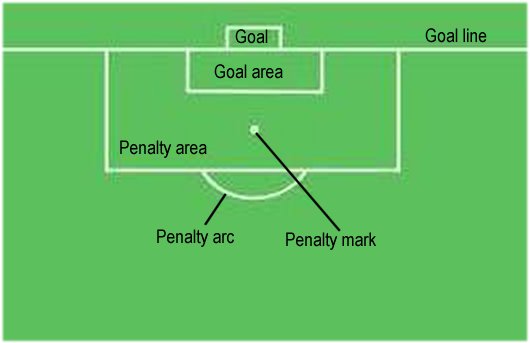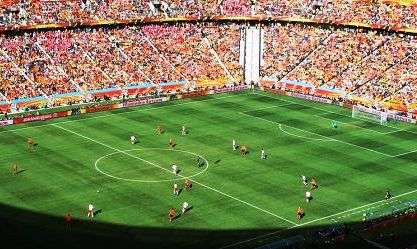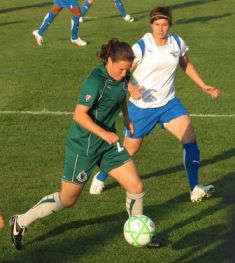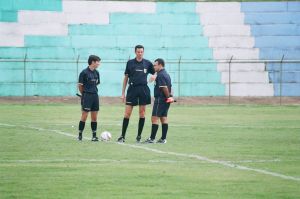Kids Sports >>
Soccer >>
Soccer Strategy
According to the rules of soccer, there are only two types of players,
the goalkeeper and everyone else. However, in actual play, different
players will need to have different skills and play different roles or
positions. Below we will discuss some of those roles. Click here to
learn more about the
goalkeeper.
Different teams and formations have different positions, but most soccer
positions can be divided up into three categories: forwards,
midfielders, and defenders.
Forwards
Forwards play closest to the opponent's goal. Sometimes they are called
strikers or attackers. Their main job is offense and to score goals. In
general, forwards must be fast and able to dribble the ball well.
Wing Forward
A wing forward plays to the right or the left of the field. Their
primary job is to dribble the ball quickly up the sidelines and then
center the ball with a pass to the center forward. Wing forwards can
also shoot on goal if they get a break away or get a clean shot when
coming up the sidelines.
Wing forwards should practice their speed and learn how to get an
accurate pass to the center of the field with a defender on them. Left
wing forwards need to be able to make a center pass with their left
foot. Practicing speed dribbling and then passing the ball to the center
will help you in playing this position.
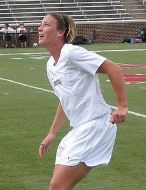
Abby Wambach plays forward
for the US Women's Team
Center Forward or Striker
The center forward's job is to score goals. They should be fast and
aggressive and be able to get the ball past the goalkeeper. They need to
be able to dribble the ball well, but also to move well without the
ball to get open for a pass. Other good skills for center forwards
include size, strength, and the ability to head the ball.
If you want to be a center forward, you should practice shots on goal.
Being able to make a shot from any angle and even with a single touch
(directly from a pass) will help you greatly at this position.
Midfielders
Just like their name sounds, midfielders play mostly around the middle
of the field. Sometimes they are also called halfbacks or linkmen.
Midfielders usually have both offensive and defensive responsibility.
They need to be able to dribble and pass the ball up to the forwards as
well as help to break up the opponent's attack.
To excel at the midfield position a player must be able to transition.
Transition is when a player receives a pass from a defender, turns the
ball up-field, and then passes the ball to a forward. Other good skills
for this position include great ball control, quickness, and the ability
to run long distances. Midfielders have to run the most, but they also
generally have the ball the most, too.
Center Midfielder
Perhaps the most important soccer position besides the goalkeeper is the
center midfielder. This player is usually the leader of the team, like a
point guard in basketball or the quarterback in American football.
Depending on the team strategy, the center midfielder may be heavily
involved in the attack and considered a striker, shooting goals from a
long distance. They may also be defensive minded, dropping back and
helping the defenders.
Defenders
The defender positions, or fullbacks, in soccer play closest to their
own goal and are tasked with stopping the other team from scoring.
Defenders must be strong and aggressive. They don't need to dribble as
well as other positions, but they do need to be able to tackle well.
They also need to have a strong kick where they can clear the ball away
from the goal.
A key skill for a defender is holding ground. This is where the defender
stays between the player with the ball and the goal and slows them up
disrupting the opponent's offense.
Sweeper
Some soccer teams have a sweeper position on defense. This player is
often the last line of defense behind the fullbacks. It's the sweepers
responsibility to pick up any undefended or unmarked player that enters
into the penalty area.
Right, Left, or Center
For many soccer positions there is a right, left, and center version.
Generally a left footed player will play the left position and a right
footed player the right. A player that can play and dribble in traffic
is usually good for the center position.

